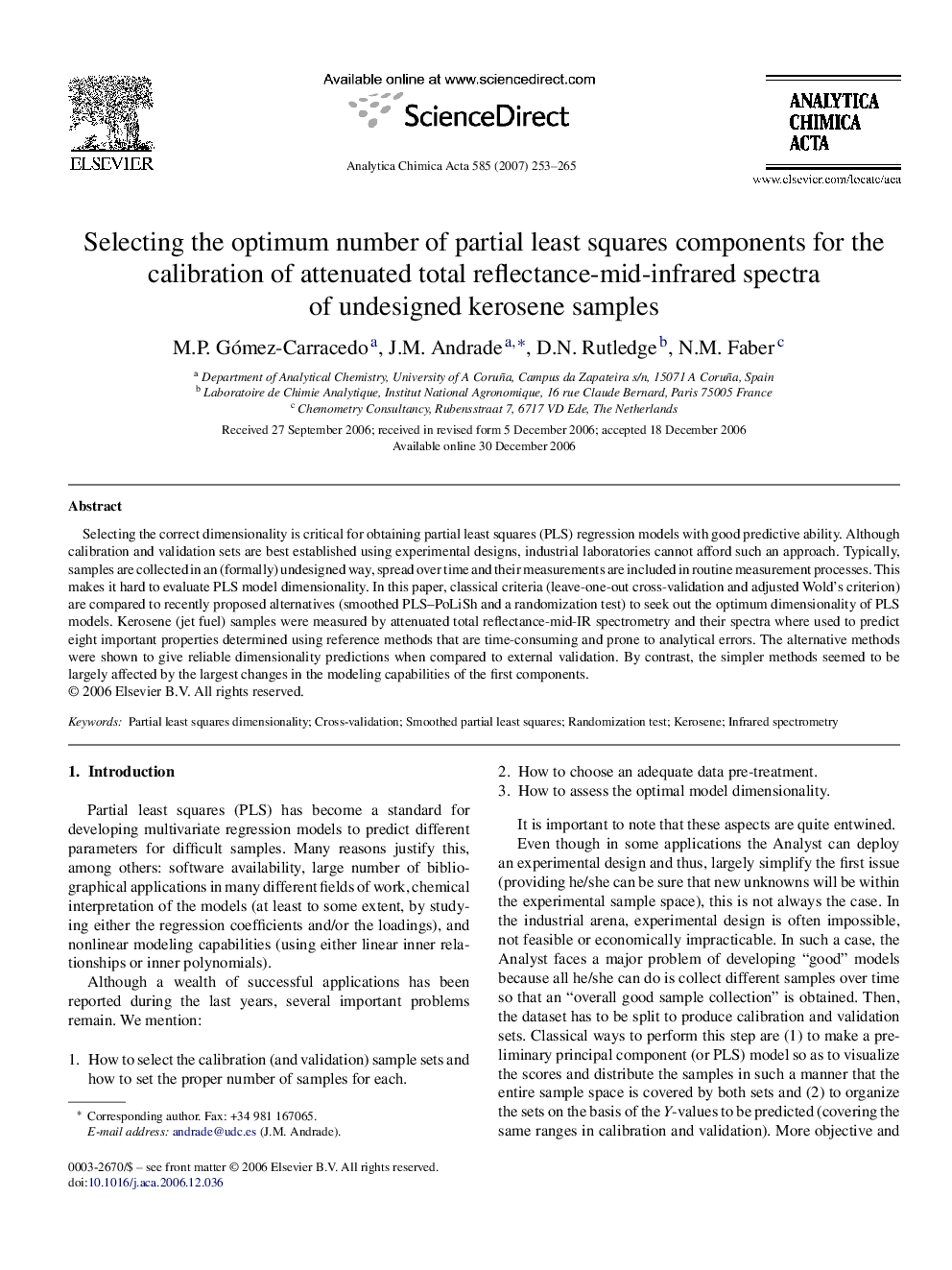| Article ID | Journal | Published Year | Pages | File Type |
|---|---|---|---|---|
| 1171345 | Analytica Chimica Acta | 2007 | 13 Pages |
Selecting the correct dimensionality is critical for obtaining partial least squares (PLS) regression models with good predictive ability. Although calibration and validation sets are best established using experimental designs, industrial laboratories cannot afford such an approach. Typically, samples are collected in an (formally) undesigned way, spread over time and their measurements are included in routine measurement processes. This makes it hard to evaluate PLS model dimensionality. In this paper, classical criteria (leave-one-out cross-validation and adjusted Wold's criterion) are compared to recently proposed alternatives (smoothed PLS–PoLiSh and a randomization test) to seek out the optimum dimensionality of PLS models. Kerosene (jet fuel) samples were measured by attenuated total reflectance-mid-IR spectrometry and their spectra where used to predict eight important properties determined using reference methods that are time-consuming and prone to analytical errors. The alternative methods were shown to give reliable dimensionality predictions when compared to external validation. By contrast, the simpler methods seemed to be largely affected by the largest changes in the modeling capabilities of the first components.
